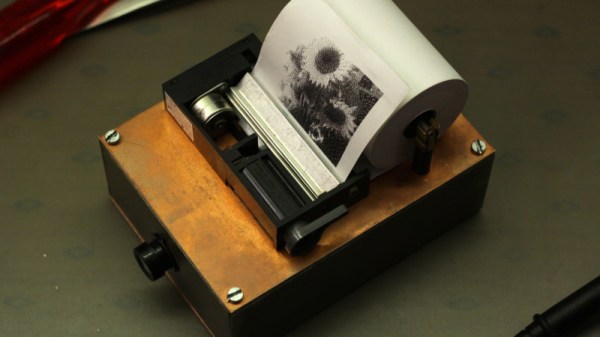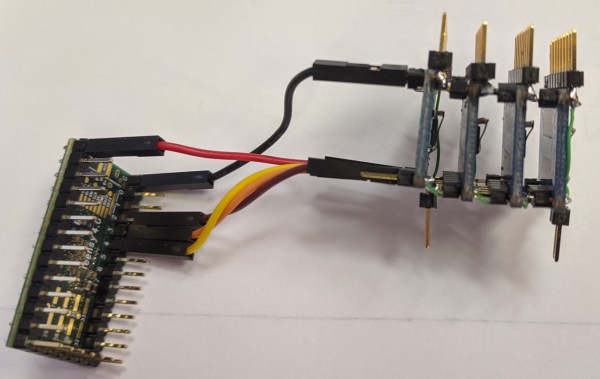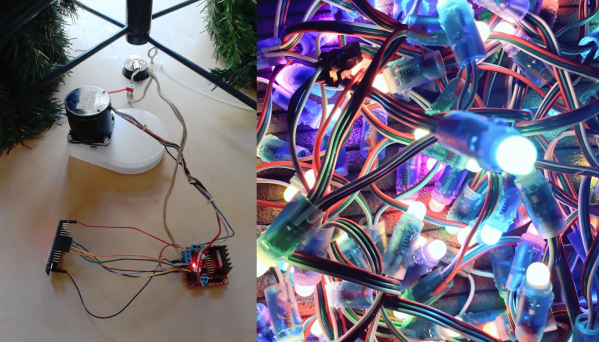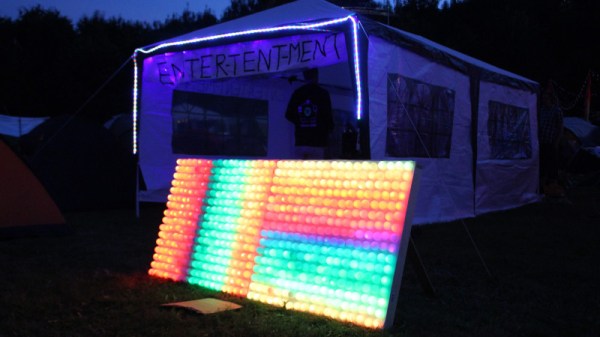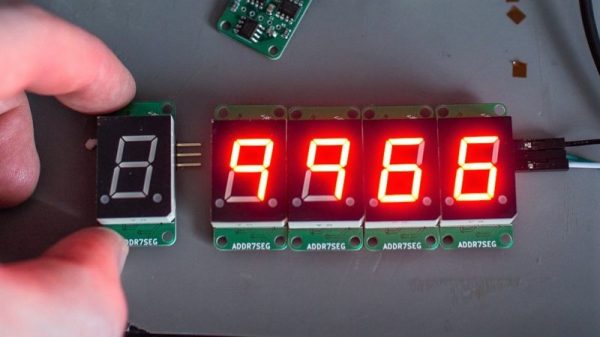Back in April we challenged hackers to make the best of a tough situation by spending their time in isolation building with what they had laying around the shop. The pandemic might have forced us to stay in our homes and brought global shipping to a near standstill, but judging by the nearly 300 projects that were ultimately entered into the Making Tech At Home Contest, it certainly didn’t stifle the creativity of the incredible Hackaday community.
While it’s never easy selecting the winners, we think you’ll agree that the Inverse Thermal Camera is really something special. Combining a surplus thermal printer, STM32F103 Blue Pill, and OV7670 camera module inside an enclosure made from scraps of copper clad PCB, the gadget prints out the captured images on a roll of receipt paper like some kind of post-apocalyptic lo-fi Polaroid.
The HexMatrix Clock also exemplified the theme of working with what you have, as the electronics were nothing more exotic than a string of WS2811 LEDs and either an Arduino or ESP8266 to drive them. With the LEDs mounted into a 3D printed frame and diffuser, this unique display has an almost alien beauty about it. If you like that concept and have a few more RGB LEDs laying around, then you’ll love the Hive Lamp which took a very similar idea and stretched it out into the third dimension to create a standing technicolor light source that wouldn’t be out of place on a starship.
Each of these three top projects will receive a collection of parts and tools courtesy of Digi-Key valued at $500.
Runners Up
Out friends at Digi-Key were also kind enough to provide smaller grab bags of electronic goodies to the creators of the following 30 projects to help them keep hacking in these trying times:
-
- Bar Bot on the Cheap
- TELEBOT
- Hydraulic Drill Press on a Budget
- SDR LimeToGo
- Quarantine Fan PWMer
- Melba I
- 74xx Discrete Clock
- Arduino Cat Training Console
- toolsloth
- berlinClock
- HDD Delta Robot
- Zero Budget Pedalboard
- IOT Motion Sensor (3D print) – DIY
- Mokki: Much Retro Game Console
- Truly WiFi Extender
- MP3Flower
- Hacking a iMac G5 into an HDMI monitor
- Atari 8 bit, NES and SMS on an ESP32
- Calorie Restricted Phone Charging
- Desk Plant Weather Station
- Starburst
- Stepper Synth
- Virtual Pipe Organ
- PolyMorph Receiver
- No-Face-Touchy Training Collar (No Magnets!)
- DIY 6-digit multimeter
- DIY Lithophane Floating Lamp
- LLTP – Light Logic Transistorless Processor
- 3D Printed Hand-Following AI Task Light
- DIY An Electronic Desk Calendar
The Making Tech At Home Contest might be over, but unfortunately, it looks like COVID-19 will be hanging around for a bit. Hopefully some of these incredible projects will inspire you to make the most out of your longer than expected downtime.

